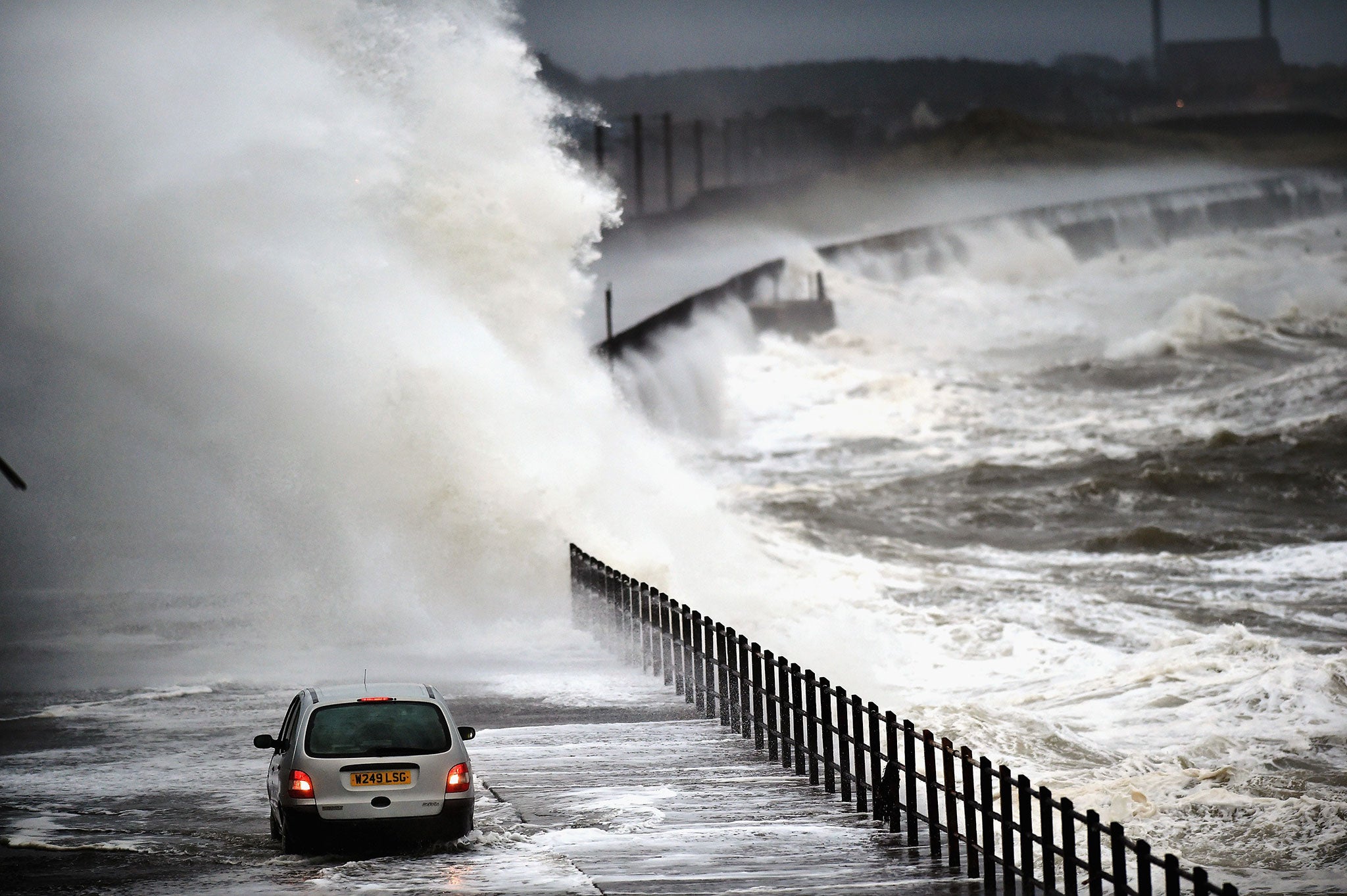Millions of Europeans face being flooded out of their homes every year as sea levels rise
By 2100, extreme sea levels could be nearly a metre higher around the North Sea than today, while waves are also getting more powerful

Massive coastal flooding could make the homes of some five million people in Europe virtually uninhabitable by the end of this century, a new study suggests.
Researchers found that rising sea levels could lead to floods that currently only happen about once a century taking place on an annual basis – if nothing is done to reduce global warming.
The North Sea was expected to see the highest increase in extreme sea levels of just under a metre (about three feet).
The Baltic Sea and the Atlantic coasts of Ireland and Britain were also expected to see significant rises, while the southern Europe would see little changes in climate extremes.
The Portuguese coast and Gulf of Cadiz was expected to see local decreases that would off-set the general rising trend of sea level.
In a paper in the journal Earth’s Future, researchers from the Joint European Research Centre (JRC) wrote: “Future extreme sea levels and flood risk along European coasts will be strongly impacted by global warming.
“Here, we show changes in all acting components, ie sea level rise, tides, waves, and storm surges, until 2100 in view of climate change.
“We find that by the end of this century the 100-year event [of high sea levels] along Europe will on average increase between 57 and 81 cm.
“The North Sea region is projected to face the highest increase, amounting to nearly 1m under a high emission scenario by 2100, followed by the Baltic Sea and Atlantic coasts of the UK and Ireland.”
One of the scientists, Professor Michalis Vousdoukas, a coastal oceanographer at the JRC, spelled out the practical implications of such a rise.
“Unless we take different protection measures, five million people will be exposed to coastal flooding on an annual basis,” he said in a statement.
Even if greenhouse gas emissions peak in 2040, the highest sea levels will still rise by enough to cause 100-year flood events once every few years.
Another study published in the journal Geophysical Research Letters found that as the world warms, waves will become more powerful.
In the southern hemisphere, the biggest waves could have up to 30 per cent more energy by 2100, the researchers found.
This would have a greater impact on the coast, speeding up rates of erosion, Dr Lorenzo Mentaschi, also of the JRC, said.
10 photographs to show to anyone who doesn't believe in climate change
Show all 10By trapping more of the heat from the sun, the amount of energy in the atmosphere and the oceans increases.
So when storms like hurricanes develop, they can be significantly more powerful.
Warm air can carry more moisture, so flooding from heavy rain is increased.
Subscribe to Independent Premium to bookmark this article
Want to bookmark your favourite articles and stories to read or reference later? Start your Independent Premium subscription today.

Join our commenting forum
Join thought-provoking conversations, follow other Independent readers and see their replies